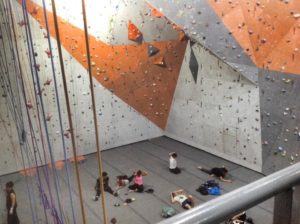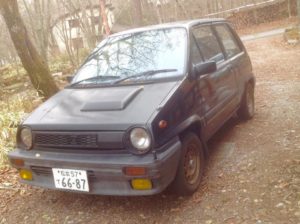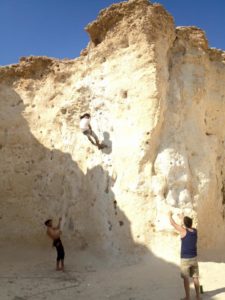Gist of this post:
- Recent quality-related scandals by Japanese companies could be an indication of the shift of how Japanese companies started to assign the glut of employees (who are immune to lay-off due to the life-time employment practice) to the auditing/compliance functions (or whatever institutes designed to eliminate the non-conformance of the set standards) . The increased deployment of manpower (and the morale of such re-purposed employees) has led to the application of rigorous standards (which might be too stringent) and that might have contributed to the increase in deviations from the heightened standards.
- In short, the increased disclosure of scandals does not necessarily reflect the decline of corporate governance in Japanese companies. However, the already-attracted social attention would probably call for some mechanisms to enhance the “corporate governance”, and it is likely to accelerate the zeitgeist of endorsing “compliance vigilantism” (facilitated by the diligence and fastidiousness endowed in the Japanese) .
- In my skewed opinion, the recent focus on compliance has become too excessive to the point of hindering the wholesome culture of product/service creation.
Lately there has been an abundance of news related to the major Japanese corporations who have been revealed to have conducted some form of falsification or omission of quality-control/assurance processes.
The general reaction to this recent chain of scandals is somewhere along the line of: “The rock-solid quality standards/products of Japanese manufacturers has become a thing of the past, and can no longer be trusted”, or similar forebodings lamenting the general decline of trust toward the good-old Japanese corporations.
While these views have a point and the deterioration of quality standards of Japanese companies is indeed a concern that unnerves the long-lasting trust in Japanese manufacturers; however, my concern lies at a different aspect: Disproportionate focus/resources deployed to ensure compliance, (as opposed to product/service delivery).
As the delivery of products/services always precedes the quality control of delivery processes, the emphasis on auditing (or process control) is a likely indication of how mature and sophisticated the industry has become.
Meanwhile, the notable downside of “auditing” process (or whatever institute designed to enhance companies’ capacity to conform to designated standards) is that it more or less requires the allocation of resources that could have been otherwise dedicated for creation of products/services. Inherently, it is costly to place quality control measures (unless such measures effectively remove the flaws/inefficiencies of delivery process). This is why we don’t expect much of quality when it comes to low-cost products/services, and it would be fair to conclude that there is a general decline in how Japanese companies place priorities in quality assurance (to reduce the costs associated).
However, it is worth revisiting the fact that pointing out flaws (or points of improvement) in the delivery process is relatively easy, compared to making products/services, and moreover such auditing could be never-ending, especially considering the complexities of modern delivery networks and the litany of points that could be potentially improved.
My intention is neither; deny the importance of quality control nor enumerate empirical evidence to advance my view, but I sense that the zeitgeist of “compliance” has become too domineering to the point of creating some Japan-specific phenomenon: Emergence of senior Japanese salarymen (who had been once dispirited and astray along their life-time career), with the newly-found mission of “rectifying” the non-conformance of production/delivery processes.
Based on my skewed, yet first-hand insight/experience of working in one of such Japanese companies, the expansion of auditing/compliance departments (or whatever authority which triumphantly identifies and preempts potential deviations from the specified rules and standards) has become more conspicuous in recent years. The increase of senior salarymen assigned in such departments is correspondingly evident, and more is the case for the morale of these “compliance crusaders” whose rejuvenated enthusiasm seems to be occasionally in conflict with the primary business objective of delivering product/service. With all due respect to the auditing/compliance functions, but too much of it becomes “nitpicking”, which is easy for anybody to do, but unworthy of consuming time and manpower.
Given the difficulty of retrenching workforce in Japan (low labor mobility) and the plenitude of employees who passively benefit from such lack of risk of job loss (with less exposure to meritocracy), it has always been a task for Japanese corporations to come up with ways to motivate and deploy these “fixed” workforce (on top of rightsizing workforce by adjusting handily-disposable contract staff).
As exemplified by “Madogiwa-zoku” (“Window ledge tribe”): a term referring to a cluster of employees (usually senior) with little chance of career advancement, thus assigned to some obscure department in a company, the excess of career-stagnant employees has been somewhat a hallmark of big Japanese companies. With the increasing societal/industrial demand in compliance/auditing however, assigning such previously adrift workforce to these types of functions (be it internal department or external agency) appears to serve as a quick fix for mitigating the surplus of employees because of rigidly defined tasks (what needs to be done is clearly set), diligence & meticulousness of Japanese employees (under the clearly defined rules and guidelines), relatively attainable sense of achievement/improvement, authority over other departments/parties, etc.
Nevertheless, ensuring the compliance is essentially not intended to “create” products/services. Amid 2-decades-long economic stagnation, what Japan needs more is “creation” of new products/services/industries, rather than “improvement” of (already highly mature) existing delivery/manufacture processes. Even though, the revelation of recent scandals seems to suggest the need to further strengthen the auditing mechanism, but I would argue the strengthening of auditing mechanism has already taken place in Japan, and it inevitably leads to the increase of more cases of deviation from the heightened standards (which is the reason for the recent increase in the “supposed” scandals in Japan). Again, it is not my intention to downplay the severity of the issue, but misconducts are not only prevalent in Japan but also in other developed countries too. Besides, some scandals were utterly self-imposed (identified as “unfit” as per the internal standard). Perfecting the quality control is laudable, but it can never be achievable. Moreover the incremental improvement in quality (which could be negligible after a certain point) shall be evaluated in the context of resources that need to be deployed (people, time, cost etc.).
Instead of rambling on further, my conclusion is summarized in the first 3 bullet points in this post.
End of Post
































































